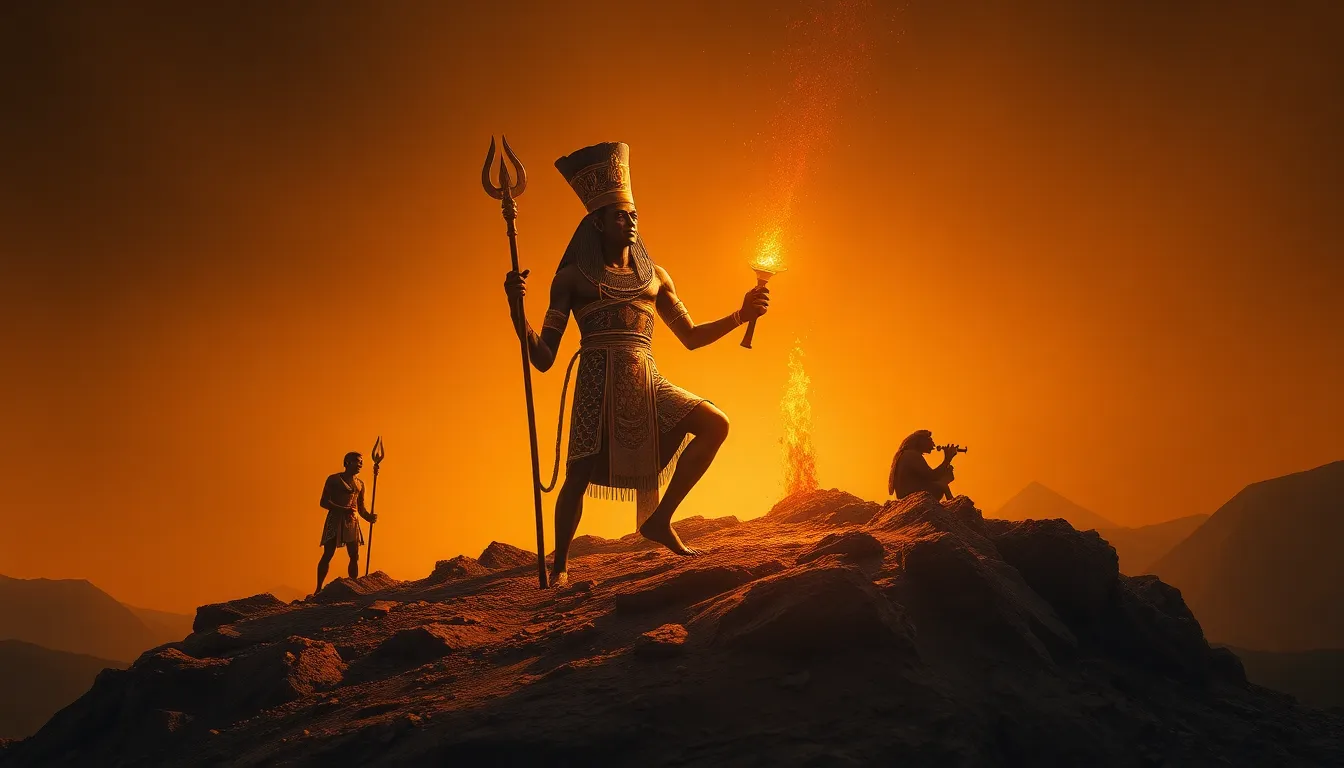The Role of the God Geb in Earth and Fertility
I. Introduction
In Egyptian mythology, Geb is a pivotal deity representing the earth and fertility. As one of the most significant gods in the ancient Egyptian pantheon, Geb embodies the physical ground upon which life flourishes. His role as the god of the earth underscores the importance of agriculture, sustenance, and the natural world in ancient Egyptian culture. This article aims to explore the various aspects of Geb, including his historical context, symbolism, relationships with other deities, influence on agriculture, and his legacy in modern culture.
II. Historical Context of Geb
The worship of Geb can be traced back to the early dynastic periods of ancient Egypt, evolving over centuries as religious practices changed. Initially regarded as a local deity, Geb’s prominence grew as he became associated with the fertility of the Nile Valley.
- Origins and evolution of Geb’s worship: Geb was often worshipped alongside other earth-related deities, but his status rose significantly during the Middle Kingdom, where he was recognized as a key figure in the creation myth.
- Depictions of Geb in ancient texts and art: Geb is frequently depicted in tomb paintings and artifacts, often shown lying down with green skin, symbolizing vegetation and fertility.
- Geb’s place in the Egyptian pantheon: As the son of the sky goddess Nut and the creator god Shu, Geb occupies a central position in the mythological narrative, serving as a foundational deity in the Egyptian cosmology.
III. Geb’s Symbolism and Attributes
Geb’s physical representations and attributes evoke his connection to the earth and its life-giving properties.
- Physical representations of Geb: Geb is commonly depicted with green skin, reflecting the lushness of fertile land. He is often shown reclining on the ground, symbolizing stability and the nurturing aspects of the earth.
- Symbolism of earth and its elements: Geb represents not only the soil but also the mountains and valleys, embodying the physical landscape that sustains life.
- Associations with fertility and regeneration: Geb’s role as a fertility god is linked to the agricultural cycles, reinforcing the connection between the earth and the sustenance it provides.
IV. Geb’s Relationship with Other Deities
Geb’s interactions with other gods illustrate the interconnectedness of Egyptian mythology and the balance of cosmic forces.
- Geb and Nut: The cosmic couple: Geb’s relationship with his sister Nut, the sky goddess, is central to many myths. Their union represents the balance between earth and sky, with their children becoming significant deities themselves.
- Interaction with Osiris and Isis in the fertility cycle: Geb is often depicted as the father of Osiris and Isis, playing an essential role in the fertility cycle and the myths surrounding life, death, and resurrection.
- Role in the balance between chaos and order: Geb’s position as the earth god places him in a critical role in maintaining the Ma’at, or cosmic order, which is vital in Egyptian belief systems.
V. Geb’s Influence on Agriculture and Fertility
As the god of the earth, Geb is intrinsically linked to agriculture and the fertility of the land, which were crucial for the survival of ancient Egyptians.
- Geb as a provider of fertile land: Geb’s blessings were believed to directly influence crop yields, making him a vital deity for farmers.
- Rituals and offerings to Geb for agricultural success: Farmers would perform rituals and make offerings to Geb, seeking his favor for bountiful harvests.
- The significance of Geb in seasonal cycles and farming practices: Geb’s influence was particularly noted during the inundation of the Nile, which brought fertility to the land, aligning with Geb’s attributes.
VI. Myths and Legends Involving Geb
Various myths highlight Geb’s significance in Egyptian culture, particularly those that explain the origins of the earth and its fertility.
- Major myths featuring Geb and their implications: One of the most famous myths is the separation of Geb and Nut, which explains the creation of the cosmos and the role of Geb as the earth.
- The story of Geb and Nut’s separation: In this myth, Shu, the god of air, separates Geb and Nut, allowing life to flourish on earth. This separation symbolizes the emergence of order from chaos.
- Lessons on fertility and sustenance from Geb’s narratives: Many stories emphasize the importance of respecting the earth and its resources, underscoring ancient Egyptian values surrounding agriculture and sustenance.
VII. Geb’s Legacy in Modern Culture
The influence of Geb extends beyond ancient Egypt, resonating in contemporary spirituality and culture.
- Continuing influence of Geb in contemporary spirituality: Modern spiritual practices often draw on ancient Egyptian beliefs, using Geb as a symbol of earth and fertility in rituals.
- Representation of Geb in popular media and literature: Geb appears in various forms of media, from literature to films, often portrayed as a strong symbol of nature and fertility.
- Modern interpretations of earth and fertility linked to Geb: Environmental movements and agricultural practices today often echo the reverence for the earth that Geb represents, emphasizing sustainable practices and the importance of nurturing the land.
VIII. Conclusion
Geb holds a significant place in Egyptian mythology as the embodiment of the earth and fertility. His influence on agriculture, his relationships with other deities, and his portrayal in myths reflect the deep connection ancient Egyptians had with their environment. As we reflect on the relevance of these ancient beliefs in today’s world, it is clear that the legacy of Geb endures, reminding us of the importance of nurturing our earth and the life it sustains. The teachings of Geb continue to inspire respect for nature, making his legacy timeless and universally relevant.




